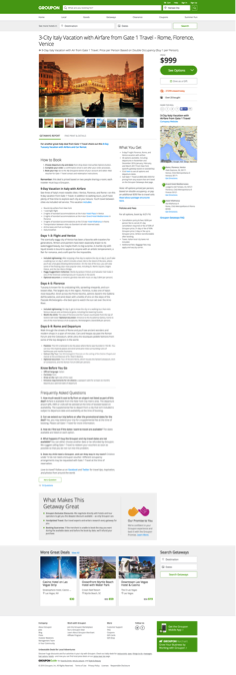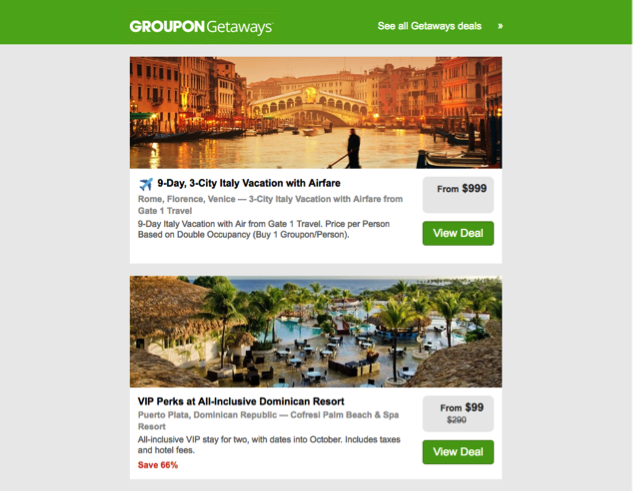Earlier today I came across a post over at Search Engine Watch that explored the concept of content creation vs content promotion (in the article it refers to ‘creation’ and ‘promotion’ as ‘strategy’ and ‘marketing’ but essentially it’s talking about the same concept) and how to improve the collaboration between these teams.
In the article it mentions 3 concepts:
- Creating content in the right context of the platform
- Getting your content in front of the right people
- The desired end goal
This got me thinking about how many questions usually come up around the topic of content marketing, especially around the strategic vs promotional side to it and how to tie it all together into commercial results (and what to measure to prove success).
The article that sparked my idea for this post takes a more top level look at each one of those points above and while this is certainly useful, I’m going to take this further for you and attempt to ‘join the dots’ of a successful multi-channel content campaign to help you better understand the why (you are doing it), the what (you actually need to do) and the how (how you do it).
Before Putting ‘Finger To Key’, You Need To Know Why You Are Creating Content
At the basic core, your ‘why’ for any piece of content you create will likely boil down to one or all of the following:
- Awareness
- Traffic to your website
- Conversions
- For SEO related purposes (for example to target long tail keywords or creating content with the objective of acquiring links)
If you don’t have a reason for creating a piece of content then take a step back and think about your why. Everything needs to be strategic.
The most common scenario to a content campaign, is that the main ‘feature piece’ of content is a page or post on your website… so let’s start there and build up our campaign.
Plan Your Campaign & Objectives In Advance
In the article over at Search Engine Watch, they use an example from Groupon so let’s stick with this but take a deeper dive into the ‘how’.
The below image is a very detailed landing page hosted on their website. You can’t make out the small print (you don’t need to) but the page is about a ‘3 City Italy Vacation With Airfare’.
This is the main feature piece, hosted on the website and where the visitor will be converted and where the conversion will occur.

The objective will [likely] be to create awareness, drive traffic to this page and ultimately conversions.
**Just to note that this example is an actual offer but the concept and techniques can be applied to almost any content campaign. For example a blog post might talk more generally to the interests of your target market with different objectives to offer awareness and conversions but you can approach the campaign in the same way.
Once you have agreed on the campaign, the objective and the target audience, you should then plan your promotion
Simply posting it to the website and hoping people will find it and come in the thousands just isn’t going to happen. You need to plan your promotion strategy to get it in front of the right people.
So how do you do it?
Where are your audience and what channels are you active in? There should only be one answer to both those questions!
So for Groupon, without looking into it in any great detail, you’d expect Facebook and Instagram but thinking outside the usual social networks, you also have the Google Display Network and content discovery networks such as Outbrain.
If you have an existing email list or lists then that’s an obvious channel to distribute your content.
You could also leverage other people’s audiences by manual outreach and collaborations (also important for link generation if that’s one of your goals). Any existing relationships that you can contact to help get the word out about your content? Your employees?
You could even take things a step further and start to pull out sub topics from your main feature piece and create more content about each of these. You could pitch these supporting content pieces as guest posts that send traffic back to your main feature piece or even post them to your own website with their own smaller promotions to expand your reach and drive more traffic back to your feature piece.
^^^ This activity will also help with your SEO (internal and external links) which should see even more traffic from search engines!
When your content goes live, you want to try and make as big a splash as possible and drive lots of relevant traffic. This usually results in some early social proof which encourages more engagement and interaction from this point onward.
This means you should plan your promotion of the content in advance wherever possible. You could plan and run your content promotion after it goes live but usually it’s better if you know in advance. The reason for this is the content promotion teams can prepare by:
- Planning which platforms to use to promote the content
- Planning the splintering of content
- Planning which audiences to promote the content to, the budget and timing
- Planning who to reach out to
- Planning what to measure and what success looks like
This is why it is important that content editors communicate and work together with content promoters (if this is not the same person).
So let’s take each one of these promotion techniques and dig a little deeper.
Planning Which Platforms To Use To Distribute The Content… In The Right Context
The long landing page full of the detail is definitely NOT the right context for an email or for Facebook but IS the right context for the website.
So what do you do?
Create micro content that is related to the main feature piece and that is in the right context of the distribution platform.
The goal is to drive as much traffic to the main content piece as possible (and ultimately conversions) so for example here is the content presented in a different context in email form:

It’s not perfect, you could tailor it to be more focused on the Italy campaign if that was your objective but you can see that the content in the context of email contains enough information to gain the interest of the visitor and entices the click to the main feature to get more information.
On social media this could be a link post with a small status of text which is a common context for Facebook posts, or it could be a really high quality image with a small line or two of text and a link in your bio which is the common context of Instagram.
The desired result is the same and that is to drive people to the main feature piece of content… but you need to present the content in the right context of the platform you are using.
Splinter Your Content For Maximum Reach And Traffic
Your organic social reach is usually extremely low. Only a small percentage of your audience usually see your post so if all you are doing is posting a single link post to each social channel then you are missing out on valuable reach.
Splinter your content piece into different micro pieces of content that are suitable for the social network of choice and schedule these posts to go out over the first few days of your content going live. In this Groupon example we could have:
- The main link post
- A handful of image posts
- Reviews from people that have previously been
- Different itinerary/activity/things to do/see etc
By taking out multiple small pieces of content from your main post, re-purposing it into the right context of the distribution channels and scheduling these posts to go out over the first few days of your content going live, you will reach more of your audience, drive more traffic back to your feature piece of content and hopefully generate some early results.
This technique can also be applied to create further pieces of content around sub topics of your feature piece. For example in the Groupon Italy feature piece we are looking at here, you could create a spin off piece of content about activities, restaurants and things to do, see and experience near the hotel.
These spin off pieces of content could be posted onsite with their own mini promotions to further support your main feature topic or they could be pitched as guest posts to reach new audiences, generate links and drive more traffic.
Laser Target Your Audience By Using Paid Promotion
You can and usually should be paying to promote your content to your target audience.
This could be via social media, via content discovery networks like Outbrain or even the Google Display Network.
Depending on the objective will depend on the budget, what you measure and who you target but it’s almost a bottomless pit in terms of spend and reach so just to clarify a couple things for you to think about:
- If the goal is links then you might want to target a narrower audience of bloggers, writers, journalists etc but if the goal is shares and reach then your audience will likely be much larger.
- If your goal is conversions such as this offer post from Groupon then you might want to be a bit tighter on your targeting and limit your audience to only the prospects most likely to take advantage of this offer
“Even if your goal is only shares and reach, you should still have conversions in mind and a follow up plan to make the most of the traffic you are paying for. A lead magnet (a hook to get them to opt in to your email list) is often the way to achieve this when your feature piece of content is more informational in nature.
We mentioned that you only reach a small percentage of your social audience organically compared to 100% reach with your email subscribers so your main goal should be to get people off the platform that you do not own (social media, Outbrain, Google Display Network) and on to your email list if your goal is not to convert them right there and then like the Groupon offer in the example we are using here.”
Who To Reach Out To & When
To make the biggest impact when your content goes live, it is usually best to manually reach out to people to leverage the audiences of others wherever possible for both exposure and links.
This could mean identifying a list of prospects who potentially might be interested in your feature piece of content, reaching out to them in advance of it going live to let them know what it is and to let you know if they are interested. If they are then you can reach out to them again with a link to your post when it goes live.
This is in the hope that they will use it as a reference in their own content and link to it or at least share it with their own audience to extend the reach and exposure of your content and to drive more traffic and hopefully conversions or shares (whatever your goals are).
(Brian Dean’s blog over at http://backlinko.com/blog/ has some great posts about outreach if you want to read more about this topic)
If the content promotion team know what the feature piece is before it goes live, they can prepare the list of potentially interested prospects and even start to ‘warm them up’ by sharing their content or interacting with them in advance of the outreach activity.
Remember we want to try and make the biggest impact we can at launch, especially if it is time sensitive so just to recap:
- Plan your content campaign, the objective and the audience and when your feature content piece is going live
- Get the content promotion team involved as early as possible to give them chance to:
- Splinter and prepare multiple posts across different platforms in the few days after the content goes live
- Create audiences ready for paid promotion
- Create lists of prospects ready for outreach and start to warm the list where possible
What To Measure With A Content Campaign
So direct response sales are usually not a metric unless it is a specific promotion driven content campaign so how else do you prove the commercial value of all your hard work to the board?
You measure what matters and attribute these things to commercial business goals.
So what matters? Well it depends on your content and the goals of the campaign but some of the most common key metrics are:
- Assisted conversions – so did your piece of content play a role in the journey of someone who converted? Was it your content that drove them to your site first then they later returned and converted into a customer or did it serve as a touch point as part of their conversion path?
- Opt ins – we mentioned before that you should usually be trying to drive blog traffic on to your email list which is a channel that you own with 100% reach. You can then work to convert the email list into customers and measure this also. Remember these are people who would have likely visited your site and left if you didn’t have the opt in.
- Links, mentions, shares – if this is a goal for your content then you need to measure this and tie it back to reach, traffic, SEO and any correlation with increased conversions or brand sentiment
- Awareness – in addition to traffic and brand sentiment, has your campaign led to an increase in brand or product related search (Checking Google Search Console should reveal this data)? Have your social media audiences grown as a result of your campaign?
So To Summarise
- Plan your campaign in advance, the audience and the objectives
- Plan your promotion strategy
- Decide what metrics you are going to measure and what success looks like or what your desired outcome is
- Work like crazy to make it happen!
